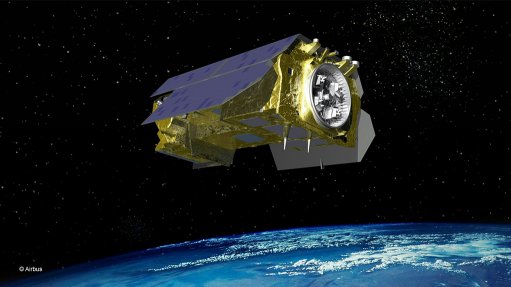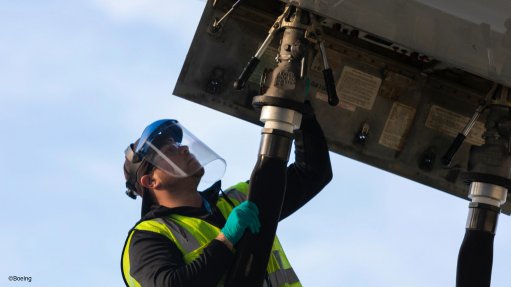Eskom, boiler contractor set up task team to assess blow-through procedures
In light of the confusion that arose about whether the technical requirements had been fully met during the recent Medupi Unit 6 blow-through, Eskom and Mitsubishi Hitachi Power Systems Africa (MHPSA) have set up a joint technical task team to review the blow-through procedure ahead of future blow-through tests on the 11 other Medupi and Kusile units.
MHPSA, previously known as Hitachi Power Africa, is the main boiler contractor at the troubled power projects, which have been plagued by delays, labour strife and funding difficulties.
Eskom, which is facing major claims across both sites, is yet to provide a final cost estimate for the projects and, besides promising that Medupi Unit 6 will be synchronised in February, it has also not provided a firm update regarding the expected interval between units.
However, it recently reported that Kusile Unit 1 is now scheduled for synchronisation only in the first half of 2017, with the 800 MW unit expected to enter commercial operations during the second half of 2017. This represents a major schedule slippage from earlier indications that synchronisation could be achieved in the first half of 2016.
The blow-through is one of the final commissioning steps ahead of grid synchronisation and is used to flush out construction debris, cleaning the steam of residue and particles prior to feeding it through to the turbine.
Temporary pipework is used to ensure the turbine is bypassed until specific steam velocity, flow rates and disturbance criteria are achieved in order to ensure that the steam is cleaned to the point where it cannot damage the turbine. A steel target plate is installed inside the temporary piping under the direction of the turbine supplier, in this case Alstom, to test the cleanliness of the steam.
MHPSA head of sales and business development David Milner insists that the company fulfilled its contractual blow-through commitments in late December, including a steam velocity exceeding 200 m/s, calculated where the steam passes the target plate as specified in MHPSA’s contract with Eskom. While a velocity of 209 m/s was achieved at this point, the velocity in the general pipework leading to the target plate would be 180 m/s.
However, as a result of what appears to be a discrepancy between the contractual stipulations outlined in the boiler contract and Eskom and Alstom’s requirements, Eskom made a statement in early January that specified cleanliness levels and flow rates had “not been completely reached”. Nevertheless, a decision had been taken to proceed with the reinstatement of the permanent pipework in order for synchronisation to proceed.
Milner says MHPSA does not concur with Eskom’s position, but describes as “pragmatic” the decision to terminate further blow-through tests on December 31, 2014, and move towards pipework reinstatement. He explains that, because blow-throughs are heavily supplemented by oil burners, the cost of continued blow-through tests is probably higher than the cost associated with any possible damage to the turbine.
He also insists that despite the difference of opinion, MHPSA and Eskom are working “constructively” to transfer the lessons learned at Unit 6 to the other units. The task team has started meeting and will make a technical assessment on the blow-through procedure, including whether or not the temporary pipework should be redesigned for the subsequent units.
Should a new design be required, there may be cost implications, as the temporary pipes used on Unit 6 were meant to be deployed during the blow-throughs on the other five Medupi units.
Milner insists that, despite the most recent disagreement, relations between MHPSA and Eskom have improved materially, particularly subsequent to recent corporate changes within the larger Japanese group, as well as within the South African unit.
Crucially for MHPSA, the global repositioning of the company, formed in February 2014 through the integration of the global thermal power generation systems businesses of Mitsubishi Heavy Industries and Hitachi, also enabled it to end its relationship with the African National Congress’ Chancellor House.
Prior to the official launch of MHPSA, Hitachi acquired Chancellor House’s stake, as well as the 5% interest held by Makotulo Investments & Services, for an undisclosed fee.
However, sustaining its black economic-empowerment credentials remained a condition what Eskom has previosuly revealed to be a R38.5-billion contract. MHPSA has achieved this through a special purpose vehicle known as Kagosano NPC, which now holds 25% of MHPSA.
Kagosano, Milner reports, is an independently governed entity established to distribute dividends from the contracts to support community upliftment and economic development of previously disadvantaged communities and individuals.
In addition MHPSA now falls directly under the Japanese parent company, rather than a European subsidiary, with Eitaro Takayama having been appointed executive chairman of the South African unit and Toshinori Shigenaka CEO.
The Japanese influence is also being more strongly felt both at head office at the project sites with about 80 Japanese nationals having been seconded to MHPSA.
In addition, the group global CEO, Takato Nishizawa, is making regular visits to South Africa to ensure improved delivery on the contracts, which are the largest and most complex being implemented by the group internationally.
Milner says the support from Japan has placed the contracts on a far firmer footing and he is also adamant that the projects “will be commissioned successfully and will produce electricity” and that South Africa will eventually be proud of what has been an “enormous undertaking”.
Comments
Press Office
Announcements
What's On
Subscribe to improve your user experience...
Option 1 (equivalent of R125 a month):
Receive a weekly copy of Creamer Media's Engineering News & Mining Weekly magazine
(print copy for those in South Africa and e-magazine for those outside of South Africa)
Receive daily email newsletters
Access to full search results
Access archive of magazine back copies
Access to Projects in Progress
Access to ONE Research Report of your choice in PDF format
Option 2 (equivalent of R375 a month):
All benefits from Option 1
PLUS
Access to Creamer Media's Research Channel Africa for ALL Research Reports, in PDF format, on various industrial and mining sectors
including Electricity; Water; Energy Transition; Hydrogen; Roads, Rail and Ports; Coal; Gold; Platinum; Battery Metals; etc.
Already a subscriber?
Forgotten your password?
Receive weekly copy of Creamer Media's Engineering News & Mining Weekly magazine (print copy for those in South Africa and e-magazine for those outside of South Africa)
➕
Recieve daily email newsletters
➕
Access to full search results
➕
Access archive of magazine back copies
➕
Access to Projects in Progress
➕
Access to ONE Research Report of your choice in PDF format
RESEARCH CHANNEL AFRICA
R4500 (equivalent of R375 a month)
SUBSCRIBEAll benefits from Option 1
➕
Access to Creamer Media's Research Channel Africa for ALL Research Reports on various industrial and mining sectors, in PDF format, including on:
Electricity
➕
Water
➕
Energy Transition
➕
Hydrogen
➕
Roads, Rail and Ports
➕
Coal
➕
Gold
➕
Platinum
➕
Battery Metals
➕
etc.
Receive all benefits from Option 1 or Option 2 delivered to numerous people at your company
➕
Multiple User names and Passwords for simultaneous log-ins
➕
Intranet integration access to all in your organisation





















